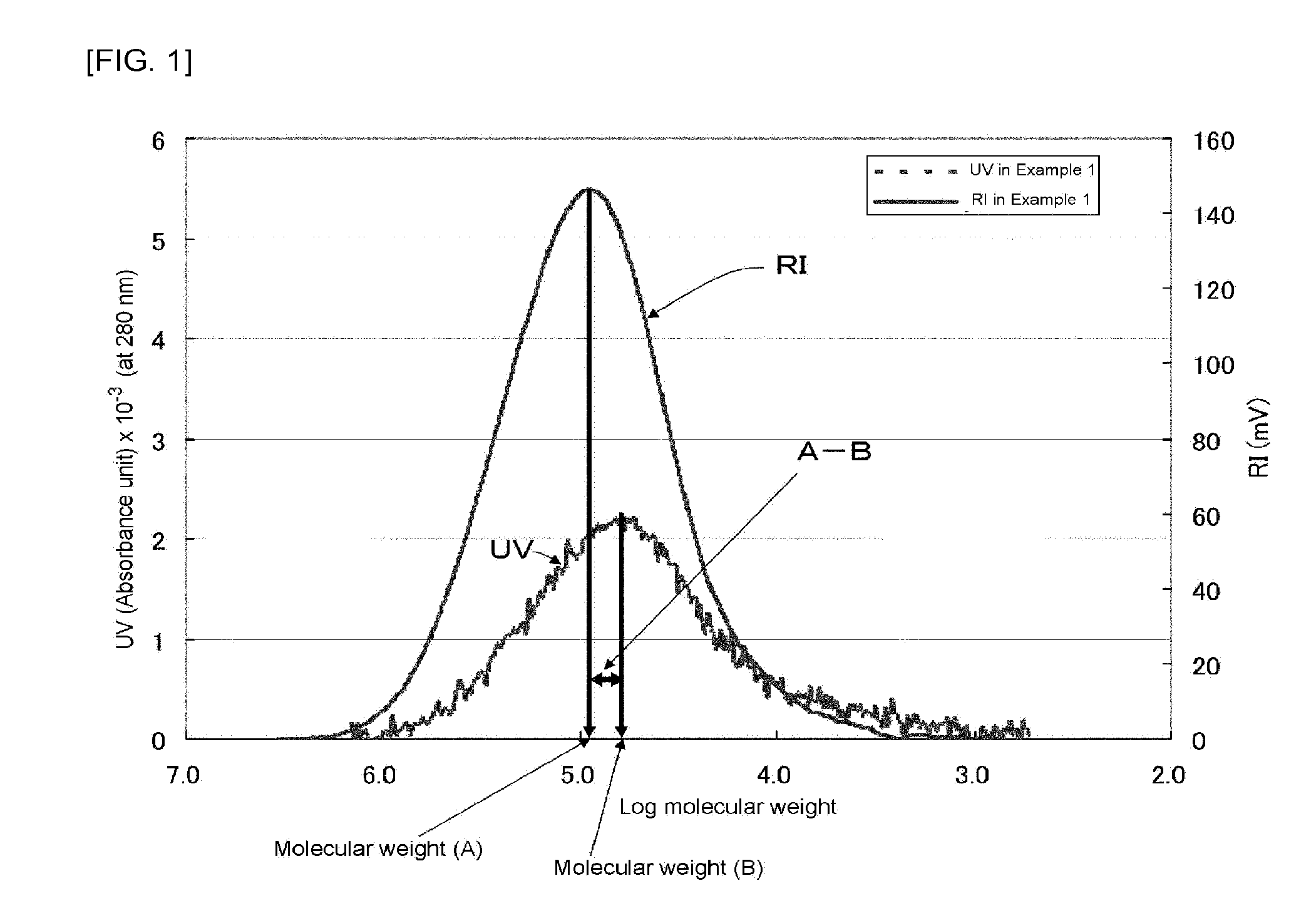Binder for formation of ceramic or for use in conductive paste, and use of same
a technology of binders and ceramics, which is applied in the direction of electrically conductive paints, non-conductive materials with dispersed conductive materials, manufacturing tools, etc., can solve the problems of increasing the amount of binder resin to be used, poor adhesiveness, and insufficient electrical properties of shaped objects, etc., to achieve excellent storage stability, improve the adhesiveness of pressure bonding of lamination, and improve the effect of adhesiveness
- Summary
- Abstract
- Description
- Claims
- Application Information
AI Technical Summary
Benefits of technology
Problems solved by technology
Method used
Image
Examples
example 1
[0196]In a 10 liter glass vessel equipped with a reflux condenser, a thermometer, and an anchor type impeller were charged 8100 g of ion-exchanged water and 660 g of PVA-1 (PVA concentration: 7.5%), and the contents were heated to 95° C. to completely dissolve the PVA. Then, the contents were gradually cooled to 10° C. over about 30 min. with stirring at 120 rpm. Then, to the vessel were added 384 g of n-butyraldehyde and 540 mL of 20% hydrochloric acid, to carry out a butyralation reaction for 150 min. Then, the mixture was heated to 60° C. over 60 min., kept at 60° C. for 120 min., and then cooled to room temperature. The precipitated resin was washed with ion-exchanged water, followed by adding an excessive aqueous solution of sodium hydroxide for neutralization. Subsequently, the resin was again washed with ion-exchanged water and then dried to provide polyvinyl butyral (PVB-1).
(Composition of Polyvinyl Butyral)
[0197]With regard to polyvinyl butyral, a degree of butyralation (de...
examples 2 to 8
[0225]Polyvinyl butyral was synthesized as described for Example 1, except that the starting PVA was changed as shown in Table 6. Then, the storage stability of the ceramic slurry, the amount of carbon residue in the ceramic green sheet, the storage stability of the conductive paste, and the amount of carbon residue in the conductive paste were evaluated as described for Example 1. The results are shown in Table 6.
example 9
[0226]Polyvinyl butyral was synthesized as described for Example 1, except that the amount of n-butyraldehyde was changed to 320 g. Then, the storage stability of the ceramic slurry, the amount of carbon residue in the ceramic green sheet, the storage stability of the conductive paste, and the amount of carbon residue in the conductive paste were evaluated as described for Example 1. The results are shown in Table 6.
PUM
| Property | Measurement | Unit |
|---|---|---|
| Temperature | aaaaa | aaaaa |
| Time | aaaaa | aaaaa |
| Nanoscale particle size | aaaaa | aaaaa |
Abstract
Description
Claims
Application Information
 Login to View More
Login to View More - R&D
- Intellectual Property
- Life Sciences
- Materials
- Tech Scout
- Unparalleled Data Quality
- Higher Quality Content
- 60% Fewer Hallucinations
Browse by: Latest US Patents, China's latest patents, Technical Efficacy Thesaurus, Application Domain, Technology Topic, Popular Technical Reports.
© 2025 PatSnap. All rights reserved.Legal|Privacy policy|Modern Slavery Act Transparency Statement|Sitemap|About US| Contact US: help@patsnap.com

